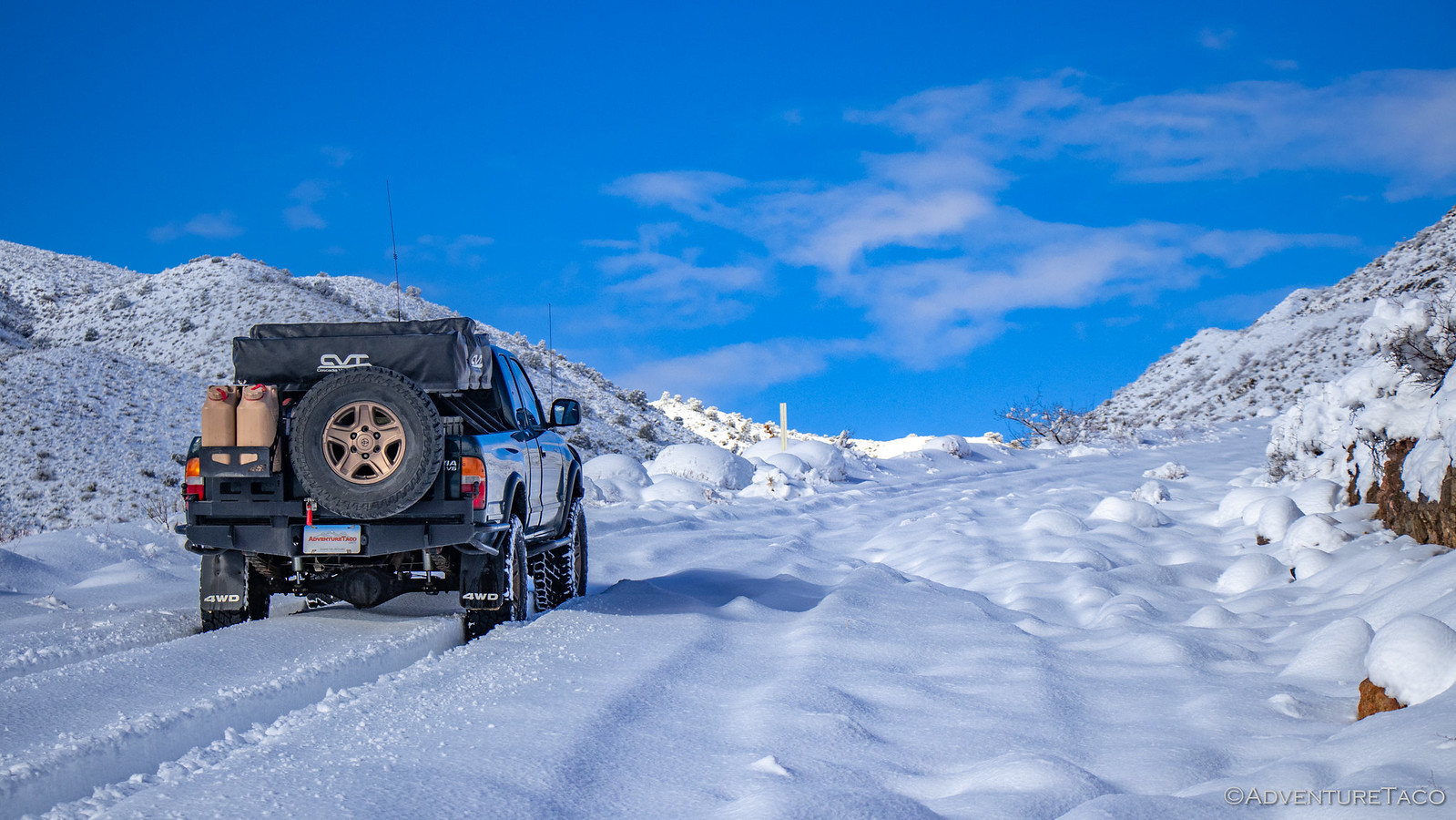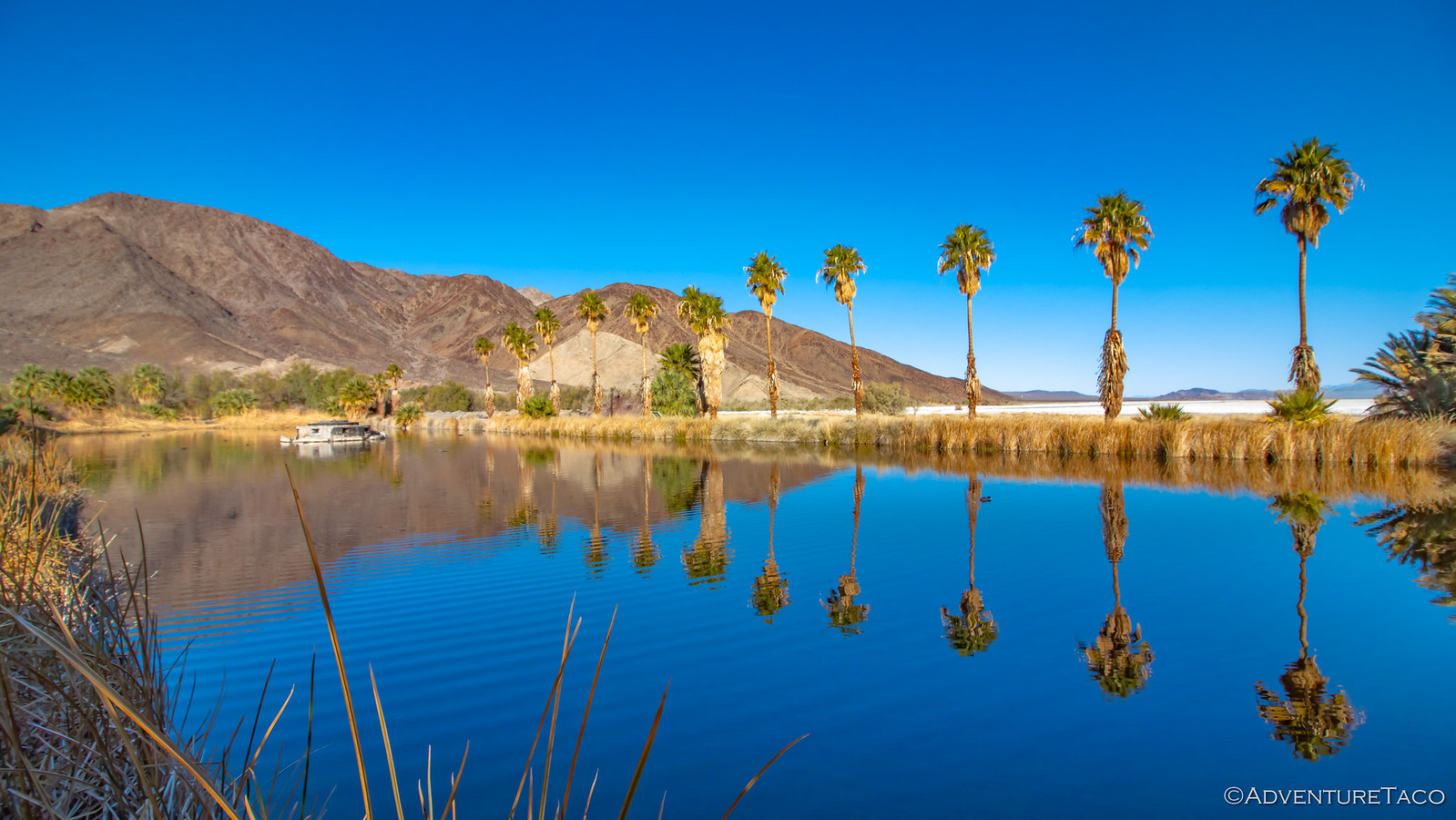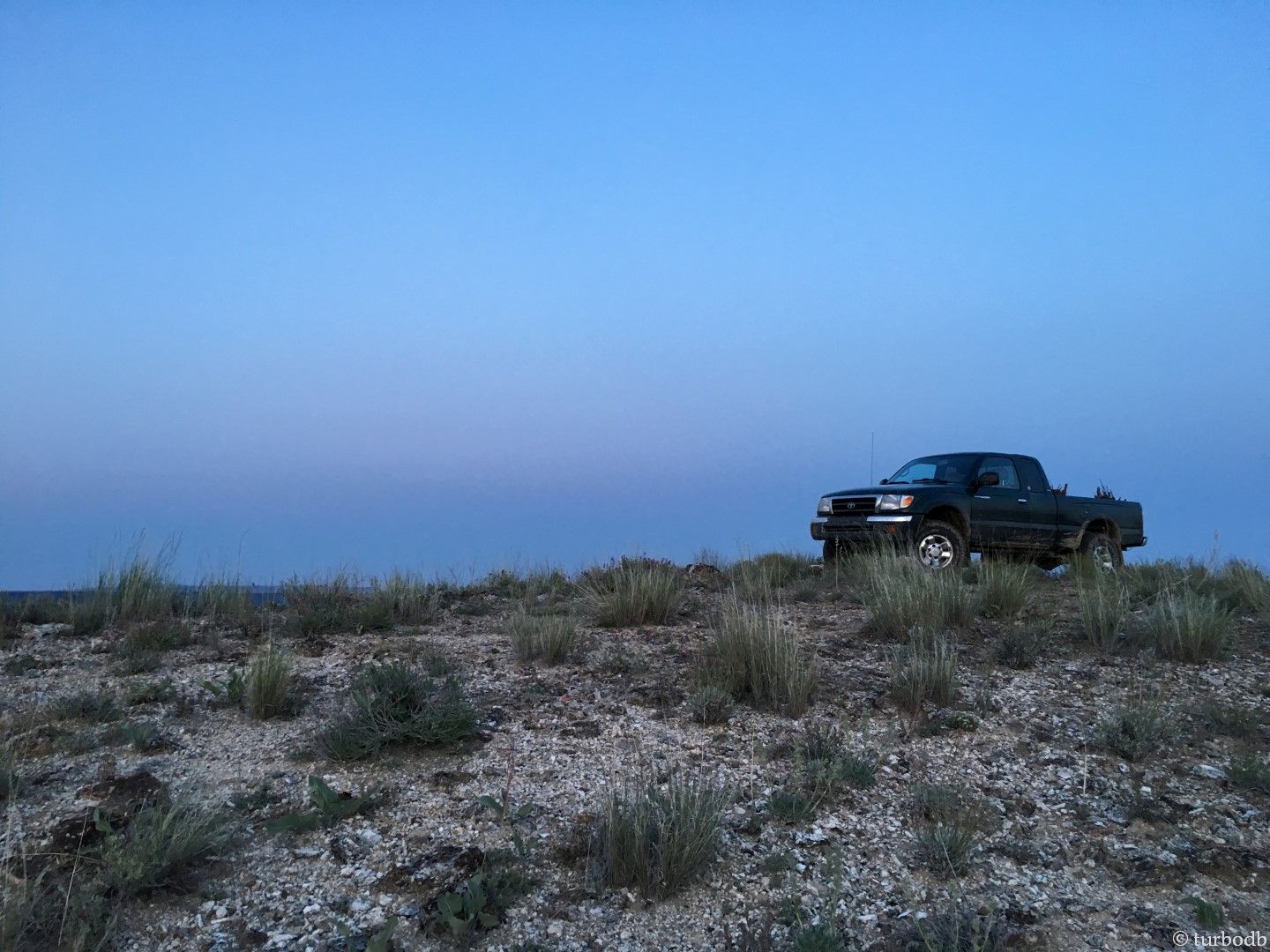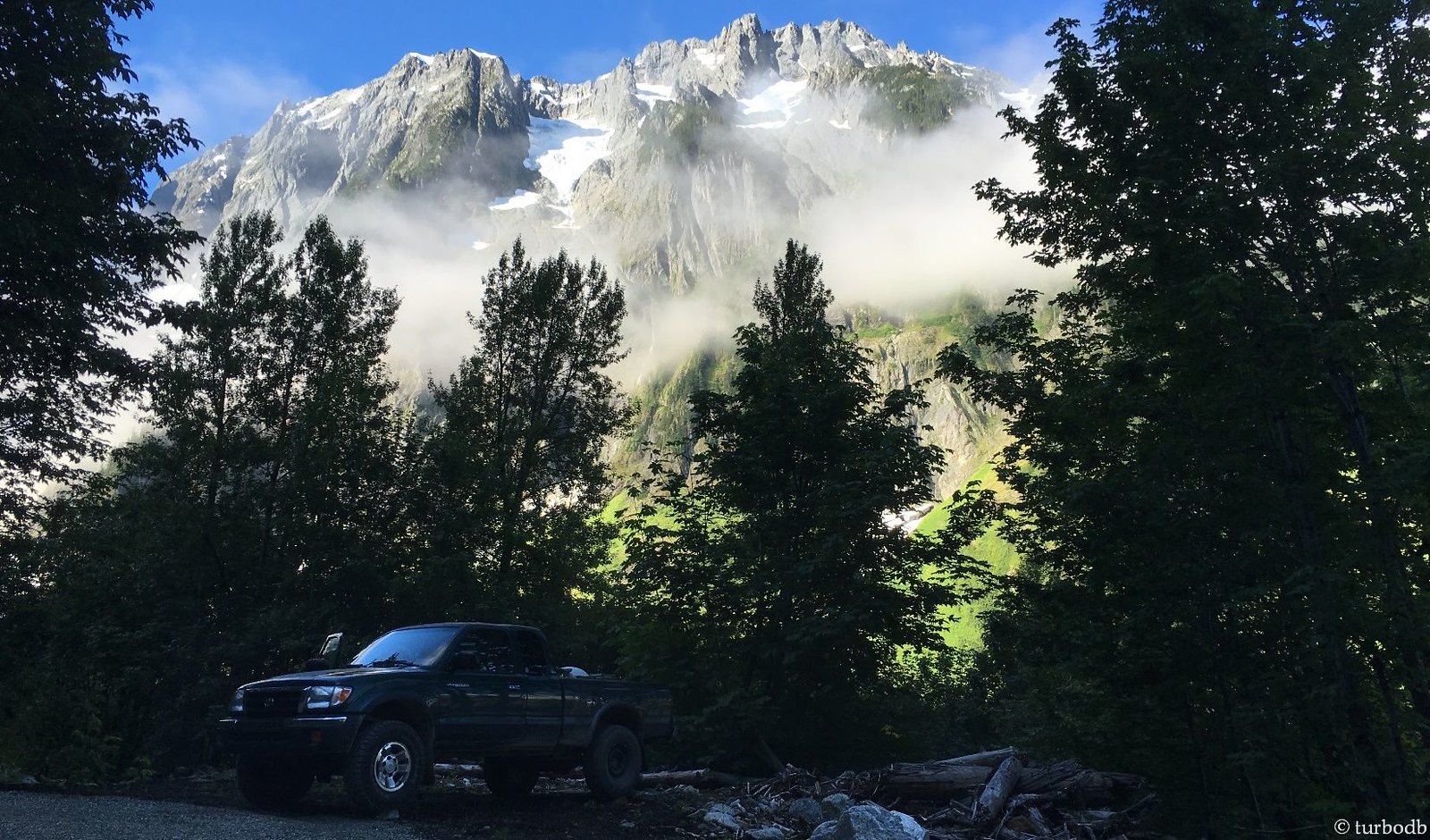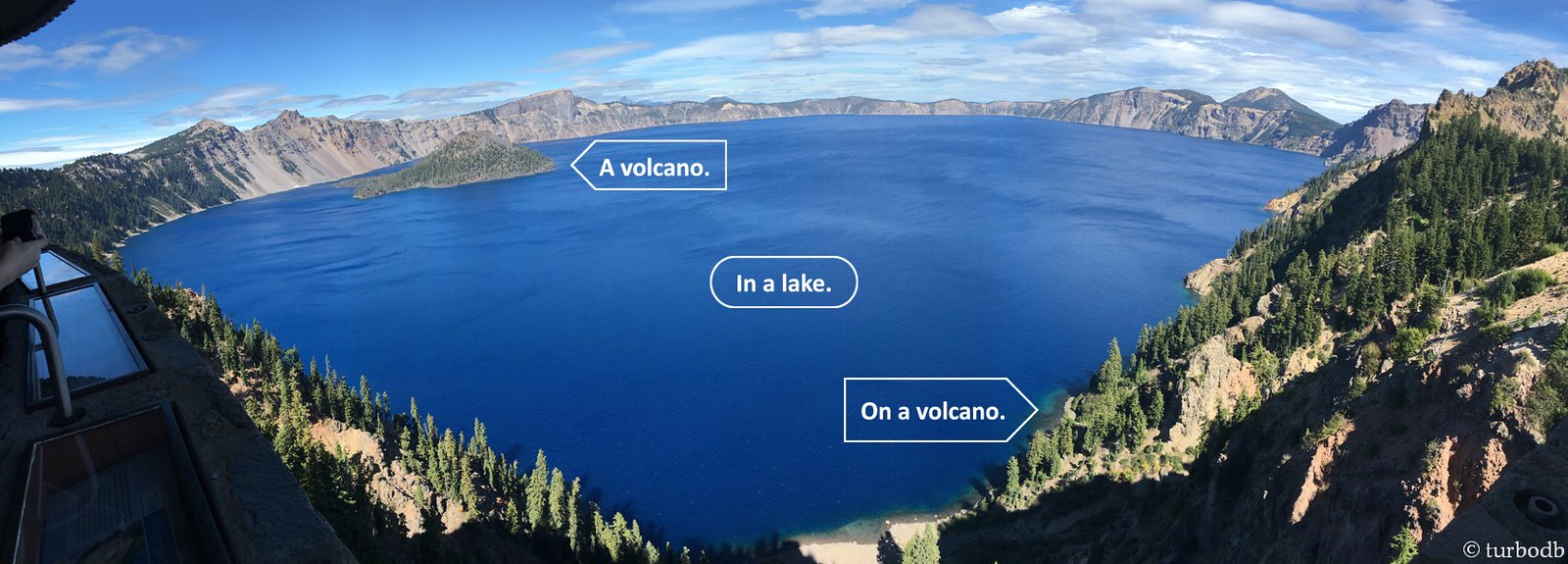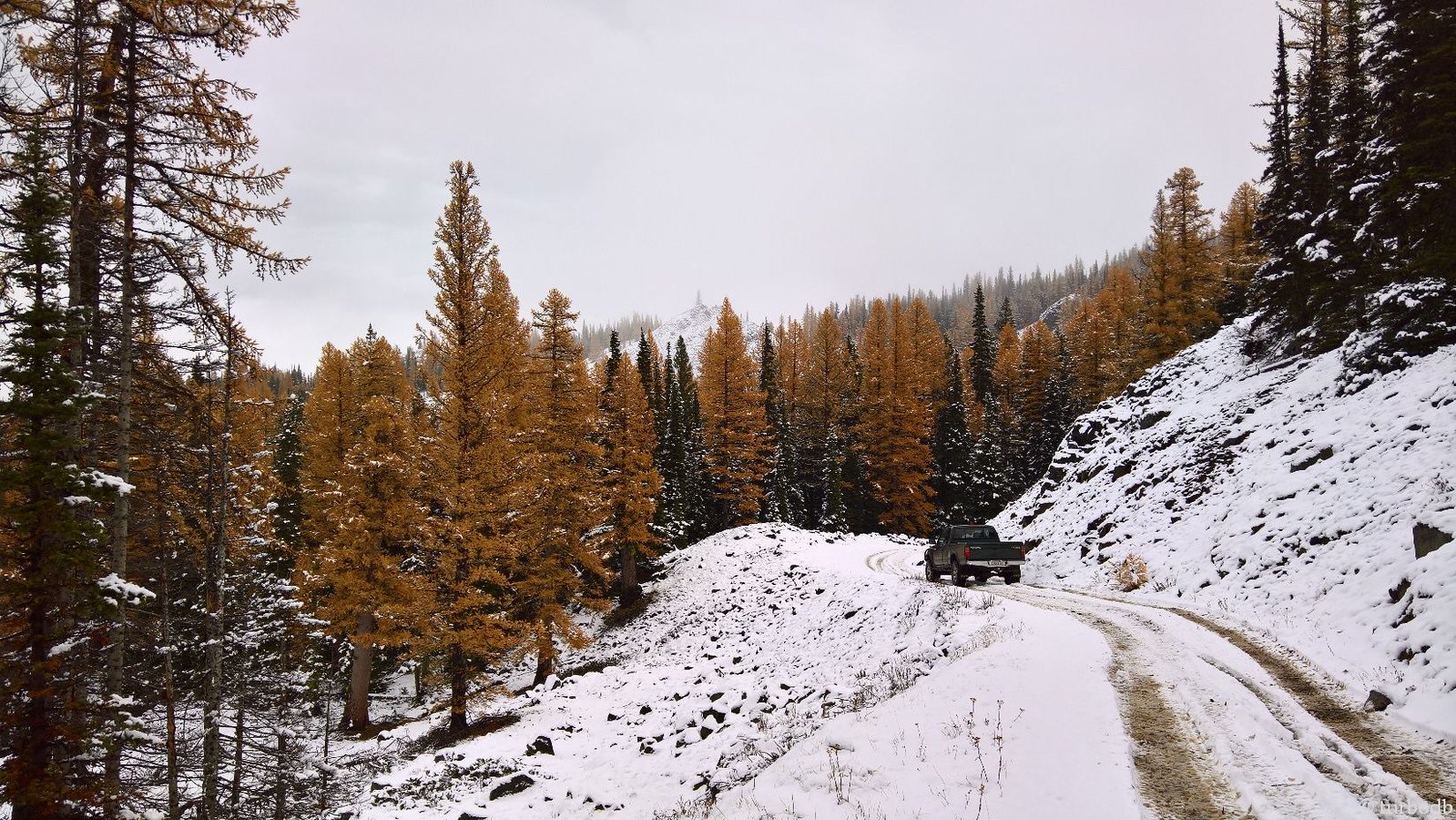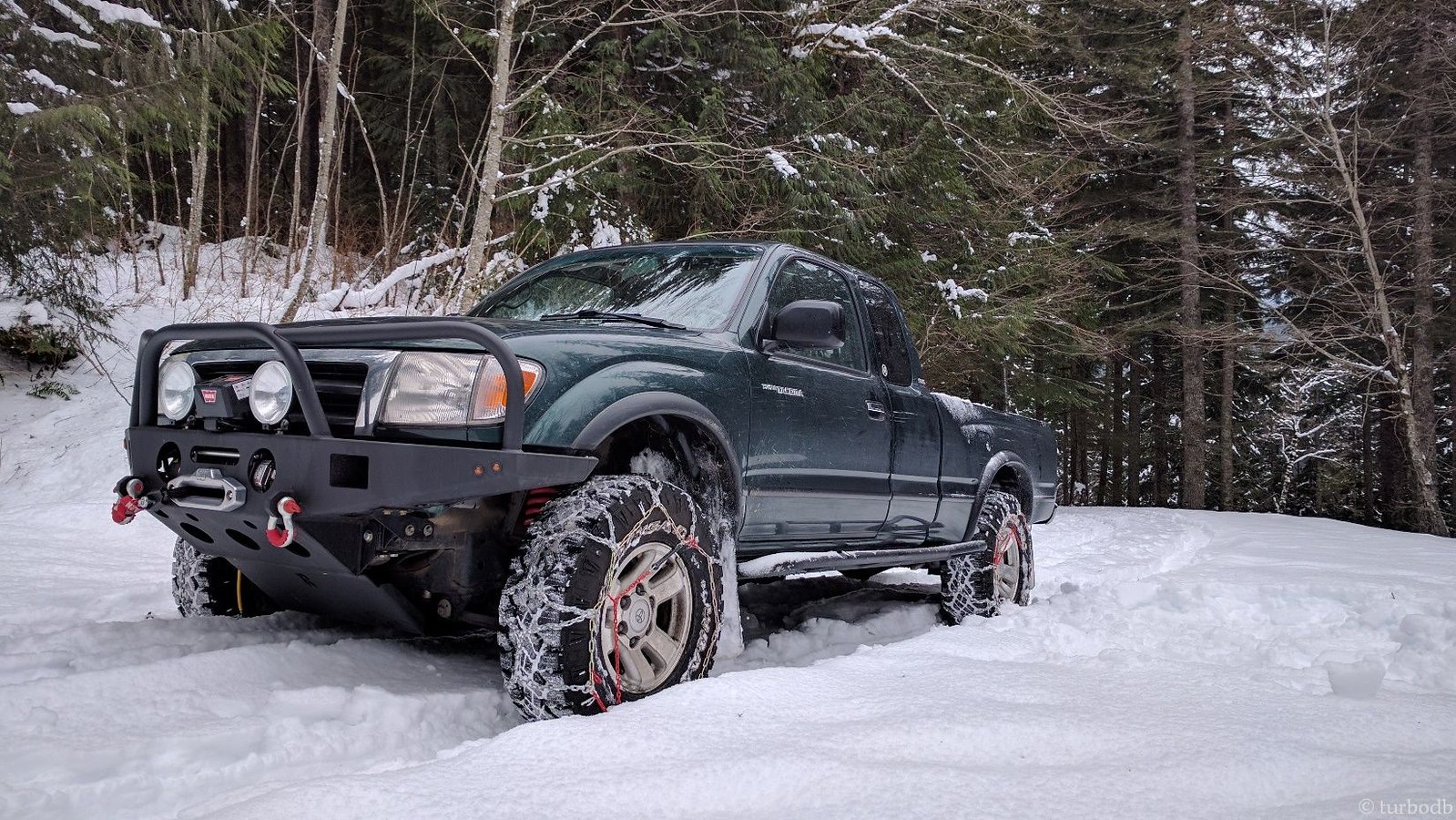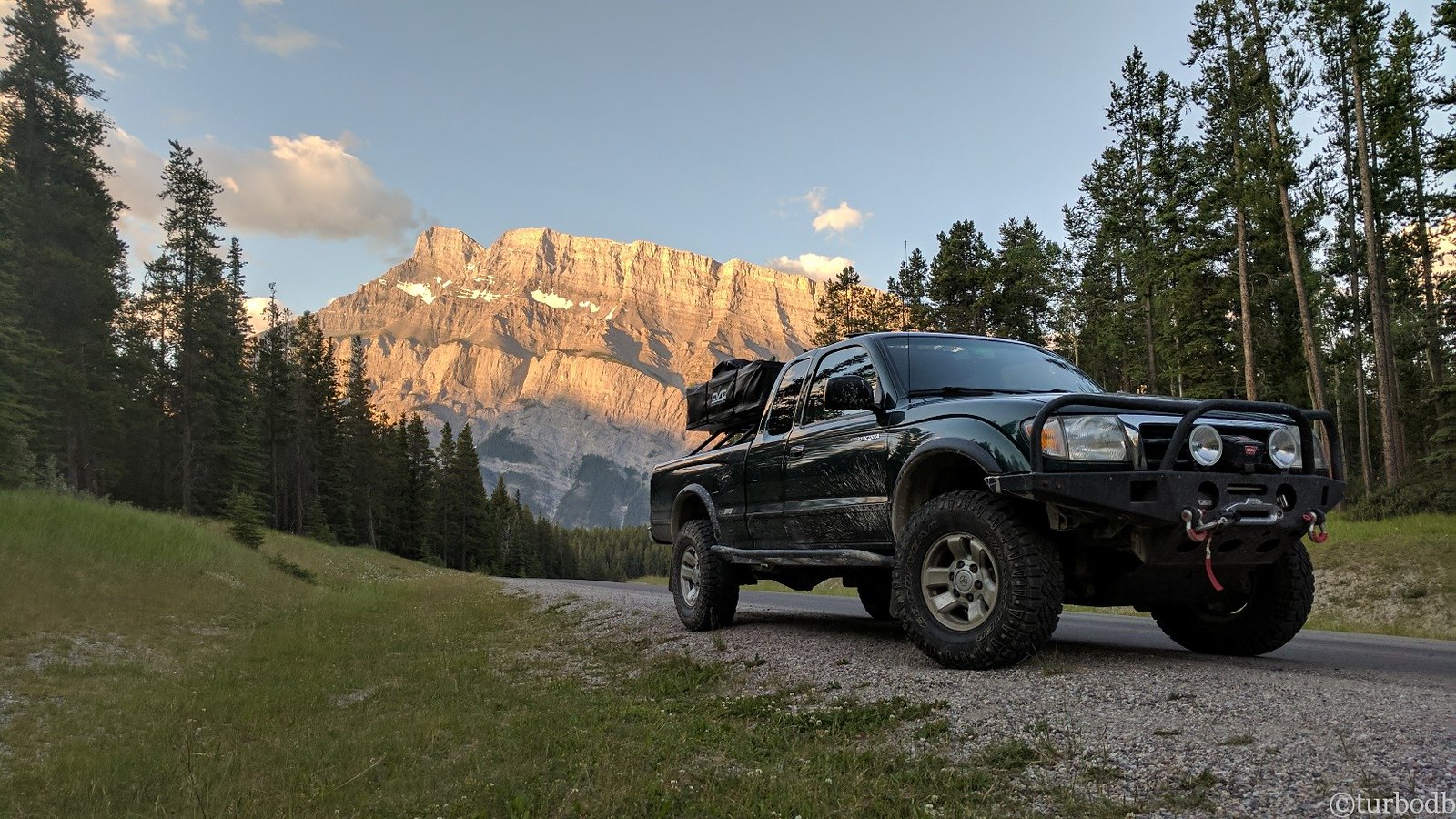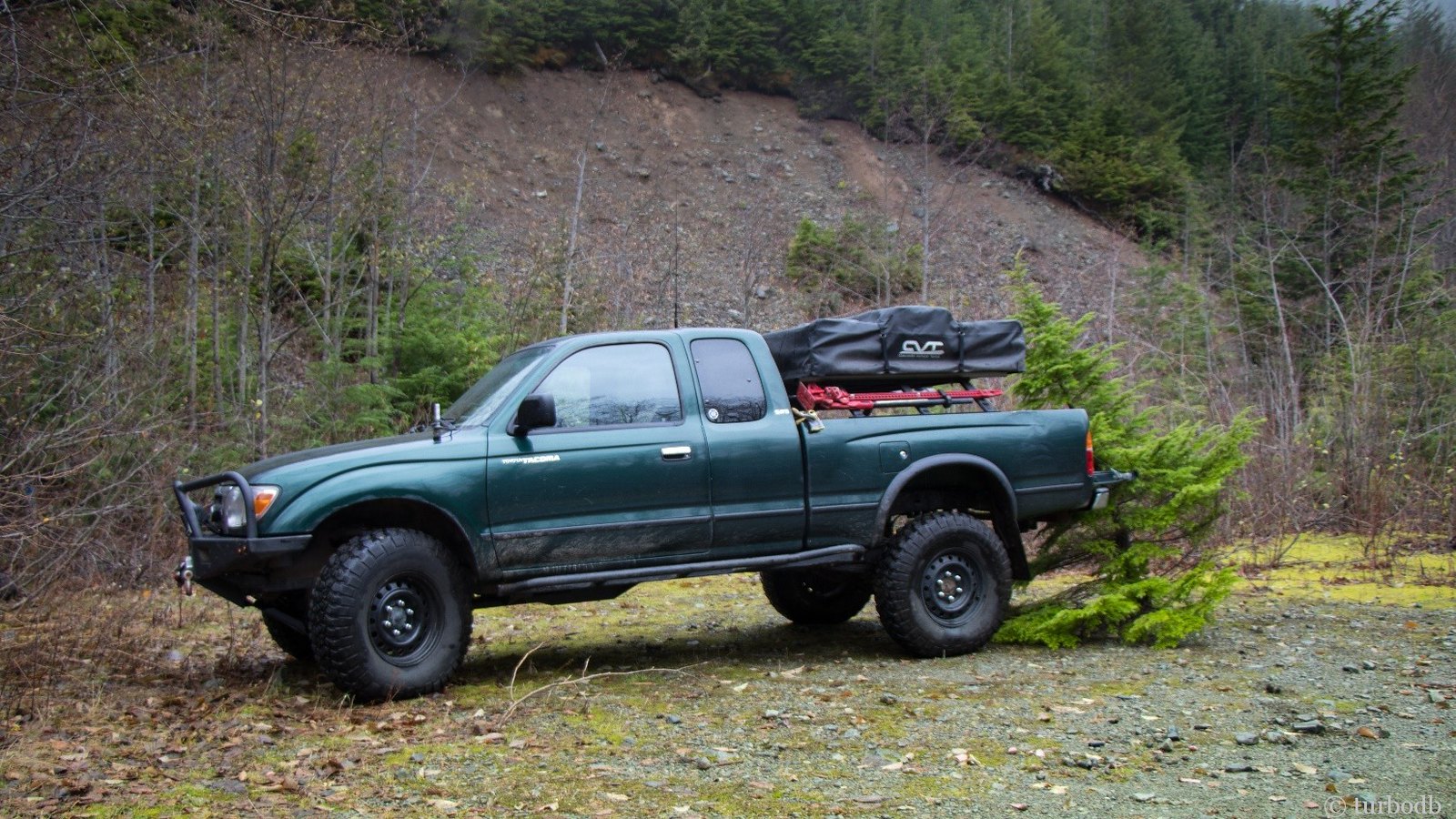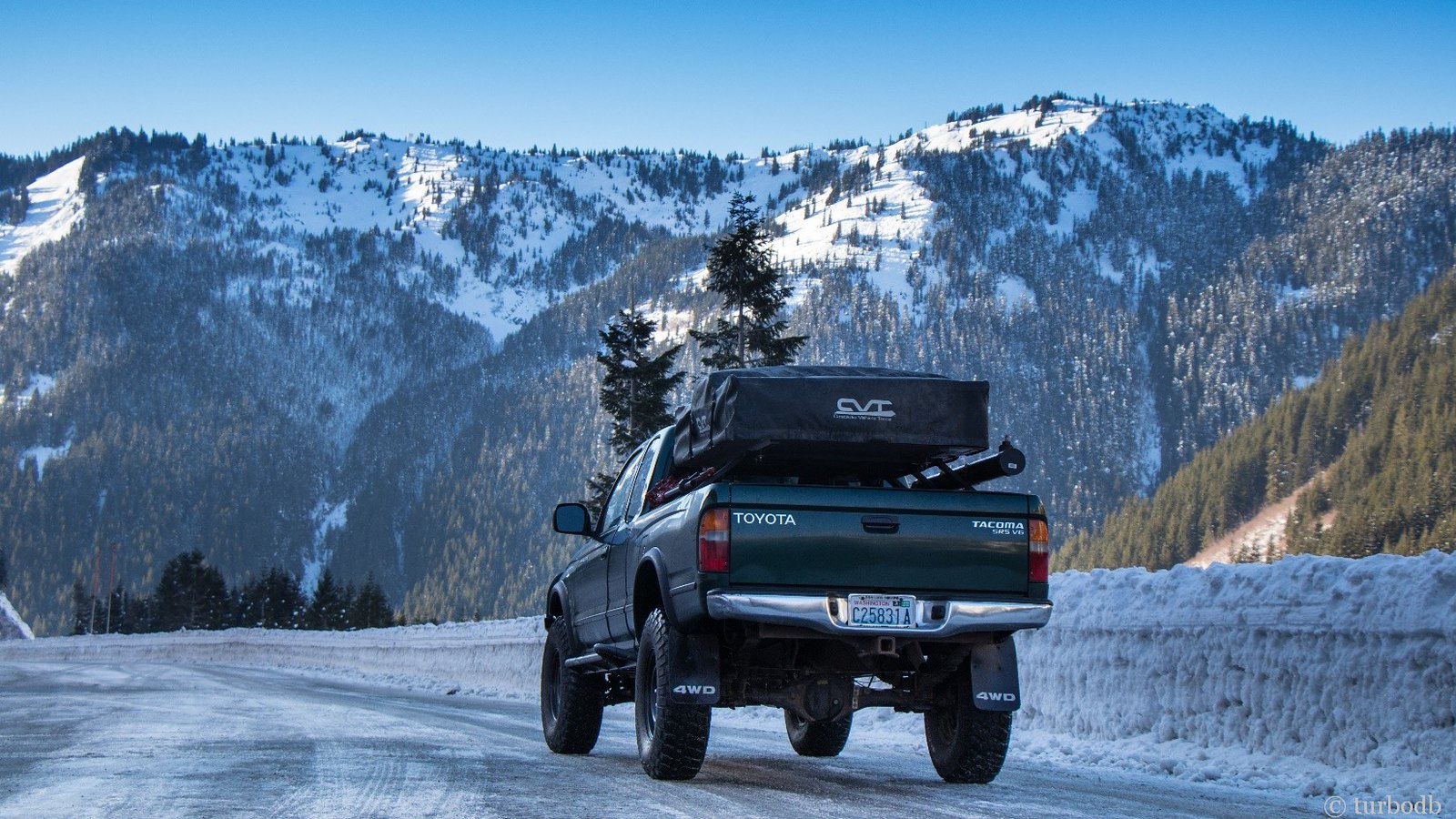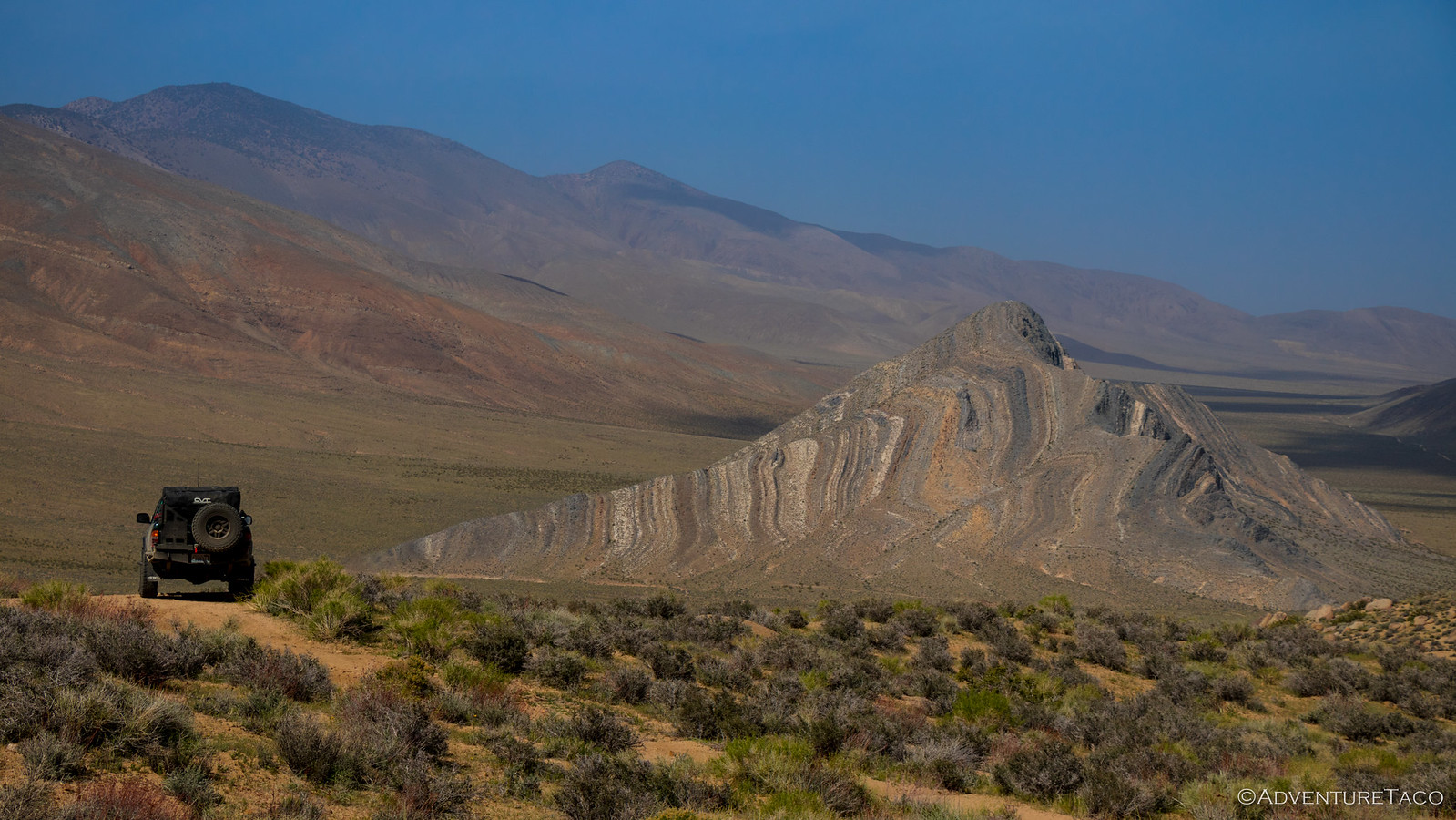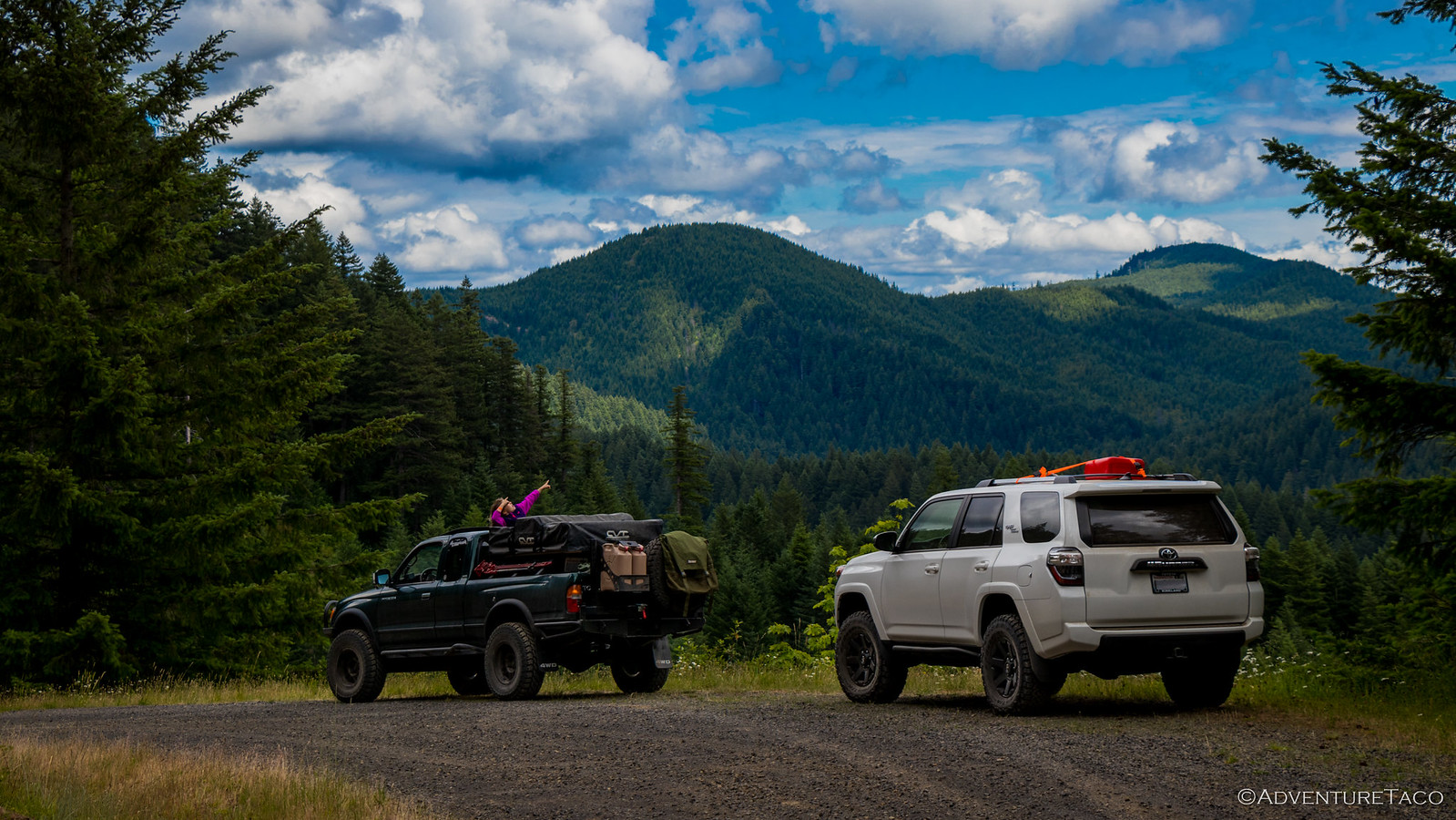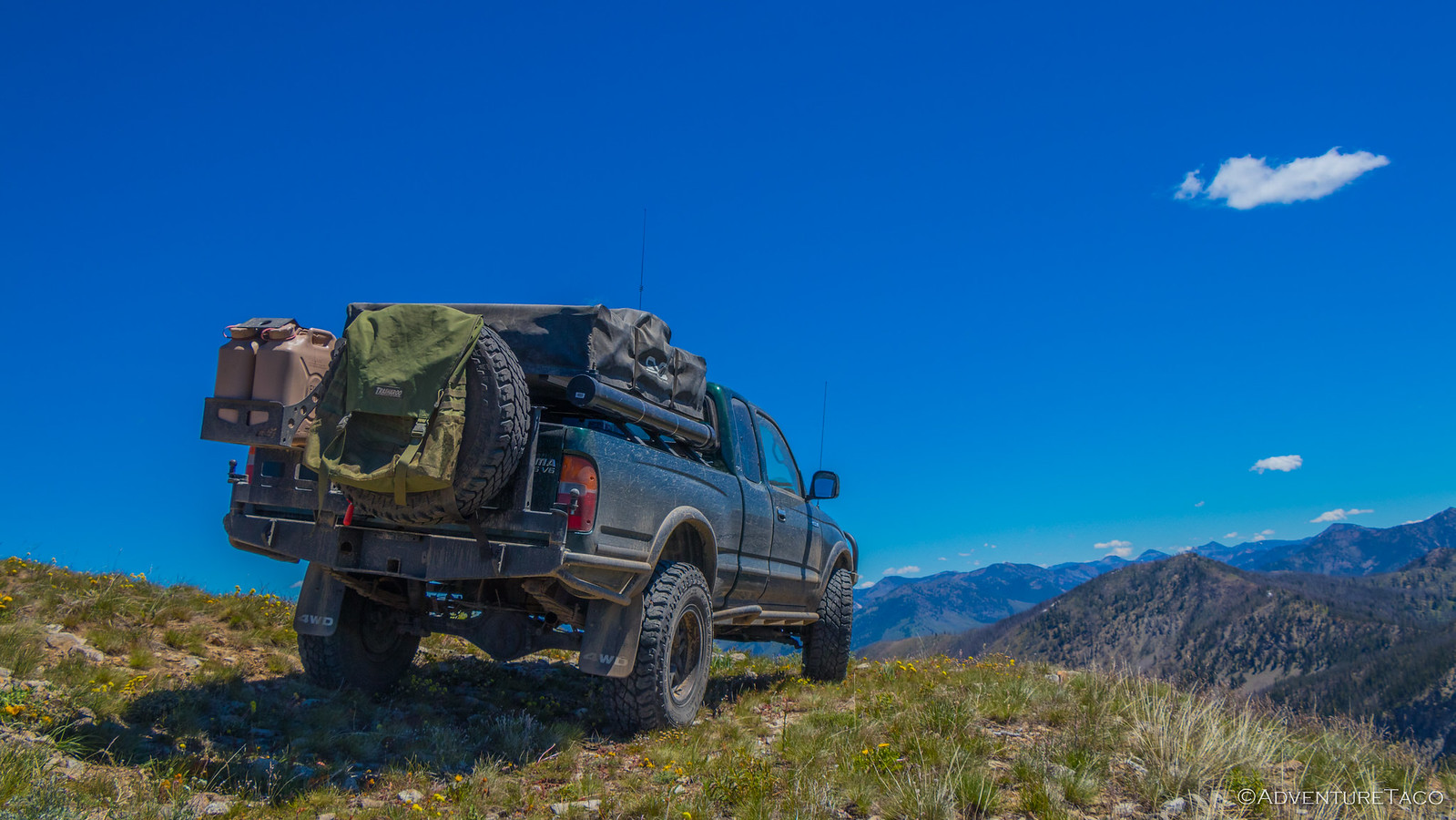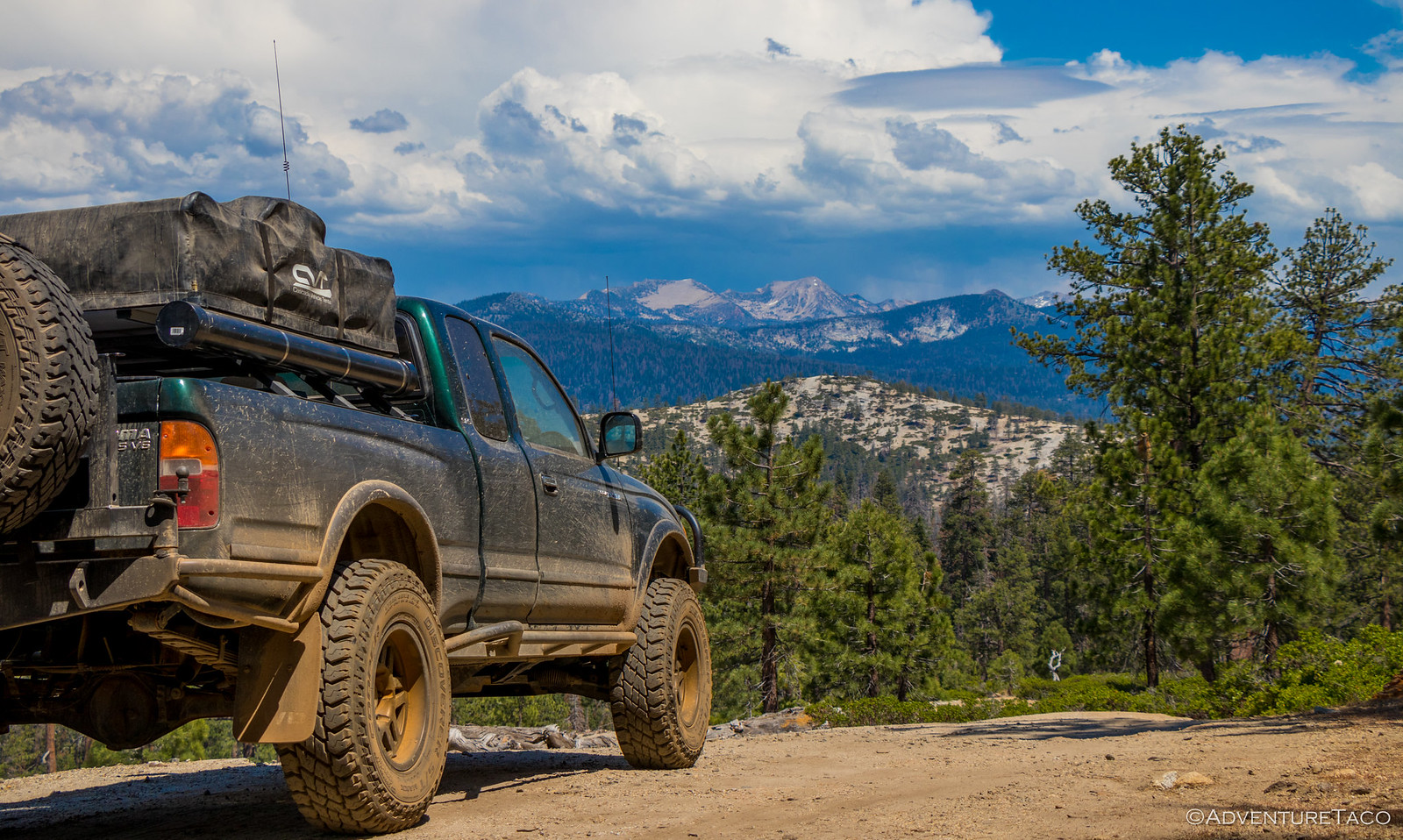It seems that after several very cold nights, we were both starting to get used to the temperature and though it was cold, we were both cozy under the covers for the duration of the night. And, having gone to bed with a few clouds in the sky, I set my alarm early in hopes that a few would stick around until morning when they'd once again be illuminated by a sun that seemed to hug the horizon through the entirety of the day.
And sure enough, the long rays of the winter put on quite the show - even if the clouds had mostly cleared and it was a short one!

We breakfasted and packed up, today a special day on this far-from-normal trip to the Mojave Preserve. Today, we were going to attempt the exploration of Caruthers Canyon. Located in the New York Mountains, this was the single place in the preserve that I was most looking forward to exploring, its description in Hiking the Mojave Desert intriguing me for some reason. Reaching elevations of 6000 feet, I knew there was no possibility that we'd be able to camp there as I'd hoped, but even just hiking the canyon was sure to be a special time.
As we ventured north on Essex Road, it quickly became clear just how close to the snow line we'd camped the previous night. The entire desert was covered in snow at elevations as low as 4500', but at least the road - which could have been a sloppy mess - was frozen at this early hour, making travel much easier than it'd be later in the day. 
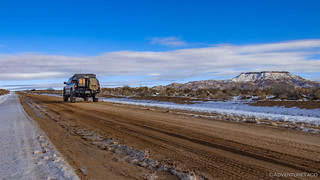
As we turned onto the Old Mojave Road for a short stint east, conditions got even whiter. Nothing that caused any trouble for the Tacoma, but enough to make us wonder what we'd find at our destination for sure.

The whiteness - we decided - was a double-edged sword. On the one hand, it had the possibility to severely limit our ability to explore and see cool things. On the other, boy, did it make the landscape beautiful! It's not often you see a Joshua Tree framed by a snow-covered mountain!


It turns out our short stint on the Mojave Road took us by the rock house at Rock Canyon that we'd investigated on our last adventure through these parts almost exactly a year earlier, and we figured a quick stop just to see what it looked like in the snow was in order.

The New York Mountains, rising in the distance, were our next destination.
As you might expect, turning off the main drag onto New York Mountain Road resulted in the snow level getting significantly deeper. Traffic had gone before us, but it had been light - two, or perhaps three vehicles over the last several days. We pressed on.


Higher and higher we pushed until we reached about 5200' - the highest we'd been since the snow by nearly 700'. As we'd experienced at the Colosseum Mine - but now several days later - the snow was 10-12" deep and we found the truck struggling a bit for traction through various washes where the drifts were even deeper. Still half a mile from the end of the road and beginning of the hike, I realized it was a fools errand to keep going.
But we weren't beat! We found a nice place to park and made the decision to travel the rest of the way on foot - there was just too much cool stuff to see for us to turn around now!

Caruthers Canyon, so close. We'd walk from here.
Entering the canyon, the reason it's so special is immediately apparent - the ground here is a giant field of Cretaceous quartz monzonite (think orangish granite), which has been eroded into countless hoodoos. One of the first that explorers encounter is Easter Island Rock, named for its resemblance to the carved heads found on the far away island. Balanced high above the trail, it seems to defy gravity as it overlooks the mouth of the canyon.
Update: August 2023
The York Fire (wikipedia) (inciweb) has burned through Caruthers Canyon (and more than 93,000 acres), changing the landscape for our lifetimes. I visited again in December 2023, and the aftermath was stunning.

We pushed on, the snow getting deeper - @mrs.turbodb following in my footsteps as I used my Muck boots to compact a path. The views were spectacular.


This was not at all what we'd expected, and the snow kept us from exploring as thoroughly as we may have otherwise, but it was still a magical experience. As we continued up the canyon, Foot Rock rose out of the snow.

Chilly out here with no socks.
After a slow mile of climbing up the canyon, we reached the apex of our hike - the Giant Ledge Mine Camp. We'd planned to continue further, but that was when we'd be hiking on solid ground - today was no day to crest the top of the canyon, its ridge shared with Keystone Canyon to the north.
Instead, we investigated what we could at the old camp. Everything covered in snow, there are surely things that we missed - just another reason to return under more "normal" conditions. Still, an old car, stove, and what appeared to be a 1906 water source were fun discoveries to make.


Remnants of an early overlander.


Having explored as much as we could in the snow, we headed back down Caruthers Canyon to the waiting truck - wondering how long it would be before the snow would be gone and we could return. And, as we made our way back out to Ivanpah Road, we stumbled upon something we'd definitely not expected to see out here in the middle of the preserve - CalTrans!
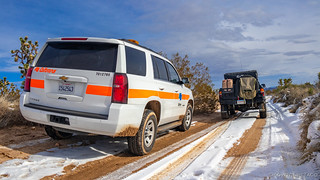
It turns out - unsurprisingly - they were not here to check on the road conditions to make sure that we'd get through without issue; rather, they were checking up on a plot of land that was part of a restoration project the company was undertaking to offset a project elsewhere in the state. As the man and two women returned to their truck, we had a fun conversation about the road conditions - they hadn't expected any snow - nor my stopping to capture a photo of their vehicle in the middle of the Mojave. With that, we bid each other safe travels and continued on with our day.
For us, that meant continuing north on our counter-clockwise loop of the preserve, fingers crossed that our next destination would be clearer than the last. In fact, while we'd originally planned to visit Keystone Canyon - just north of Caruthers - at nearly 6800' and on the north side of the range, we decided against it, instead opting to investigate the historic ghost town of Vanderbilt.

Our first stop in the area was at the foundation of the old Boomerang Mine Mill. All that's left of what must have been an enormous building, the stonework here was impeccable, and for some reason I can't fully convey, there was only one way to really capture the moment.


Vanderbilt was once acclaimed as the richest gold property in the eastern Mojave, and was worked on and off for more than 100 years. For much of that time, it supported a lively town and several mills and mines. A railroad was even constructed to haul out the riches (Hiking the Mojave Desert). Of the mines there, the Boomerang Mine was one of the more successful, and had the added benefit of being a hike, so after a quick lunch of PB&J, potato chips, and an apple, we set out to find the main shaft and headframe.


Many of the mine shafts in the preserve have been covered by the NPS in order to keep visitors from a nasty spill - or rather, to protect the NPS from the gratuitous lawsuit that might result - but doing so is much harder with an intact headframe still guarding the opening. Still, one can still make out the grating lying on the ground around the headframe, the result of a nefarious visitor cutting away the work of the NPS, once again allowing access down into the shaft.

I only made it a few rungs down the ladder before returning to solid ground - neither @mrs.turbodb nor I wanted to test the structure any more than that. A bit more looking around at the tailings, and we headed back the way we'd come - there was still much more of the Vanderbilt area to explore.
It turns out that we'd parked the truck - or rather, given our remote location, we'd simply left it in the middle of the road - right next to the workings of the Gold Bar Mine. Consisting of a couple shafts and the ruins of several old rock buildings, there was less to see here than there'd be at the Boomerang Mine - especially with the large metal grate that blocked access to the mine shaft.

The remains of an old water tank and headframe from the Gold Bar Mine.

Perhaps the most interesting find at the Gold Bar Mine was an owl pellet that @mrs.turbodb spotted on the grate covering the shaft. Old and weathered, it was at this point a pile of bones, hair, and some yellow teeth from the owls previous meal.

We continued on, winding our way through a maze of roads that led up to the top of a nearby hill to what was likely the center of Vanderbilt. Even here, interspersed among the various foundations, there were mine shafts - deep enough that the diminishing echos of a rock dropped in never seemed to end - none of them covered. Definitely not a place to wander around at night! However, of more interest to us at this site was a dugout built into the top of the hill. Likely used as cold storage, it was in remarkably good shape and sported a view that today is dramatically different than when it was built - the Ivanpah Power Plant glowing bright to the north east.

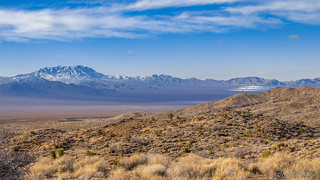
Our final destination before leaving Vanderbilt was a quick visit to the Darling Mine. With one of the most well-preserved headframes we would see - and the mine shaft below it covered by a grate - it was a good representation of the work that had been undone at the Boomerang Mine. Especially interesting here was that on closer inspection, the steel rail at the top of the headframe was clearly worn away - witness marks from the thousands of buckets that were once drug over it, their ore dumped down the still-intact shoot and moved to one of the nearby mills.

By now it was mid-afternoon, and we spent a few minutes trying to figure out where we should camp for the night, and what we would try to tackle - at least to start - the next day. A look out across the Ivanpah Valley suggested that south side of the Ivanpah mountains might be snow-free enough for us to explore - so we made the decision to look for something there, nestled in the long alluvial fan that spread out into the valley.
Knowing that we didn't have far to go meant that we could take a few more minutes as we headed down out of Vanderbilt - and that was just fine with us. The access road from the north is actually along the old grade of the California Eastern Railway, and as such is an engineering feat worthy of a closer look. Trains, unlike humans, donkeys, and automobiles need a much more gradual grade when changing elevation, and as such, the stretch of rail that climbs through the New York Mountains near Vanderbilt takes a circuitous route that looks much like a boomerang when viewed from above. Even so, it is a series of road cuts blasted through the hills and berms built up across washes - meticulously created stone culverts placed strategically to prevent the washes from affecting the line.


Following the railroad grade north, we were nearly to the Ivanpah road when we passed the entrance to the Goldome Mine. A more contemporary mine, the Goldome was in operation until 1994 when the California Desert Protection Act suspended mining activity and transformed the East Mojave Scenic Area to into the newly protected Mojave National Preserve. It stood, largely unchanged for over 20 years, until it was vandalized in 2017 by the group INDECLINE.
The gate to the mine is now open, and we decided to spend a few minutes looking around.


Note the "art" is across several storage tanks, which forms a complete picture from the front gate of the property.

The "art" is a combination of spray paint and negative space, the sheet metal of the building cut away to create the black areas.
Just as we arrived, another group of explorers - in two Tacoma's (Alvin @w3tw0rks/adv_yota, Stan @kalieaire/adventure.at) and a 4Runner (Victor @.45 JHP/go.xplre) pulled in as well. As we all walked around the old buildings, taking in both their contents and what visitors had done to them over the years, we were also - naturally - checking out each other's rigs. "Your truck sure seems familiar." said Victor, and it wasn't long before we got to talking about TacomaWorld and the blog, and sure enough, trip reports! Totally awesome what a small world we live in!



While cute, the irony of spraying this on a building was clearly lost on the vandal.
Our exploration of mines and the Mojave's history complete for the day, we bid farewell to our fellow adventurers and finally made our way to Ivanpah road and towards the base of the Ivanpah mountains to the north. As we did, we crossed the present-day rail grade owned by Union Pacific - just in time to see the lights of an engine approaching from down the line. I don't know what it is about trains, but everyone I know has some sort of fascination or nostalgia for them, and we are no different. We hung out at the crossing for a few minutes until the train rumbled by us, its horns blasting as though there was some risk that we'd venture onto the tracks.


It was a short train - or perhaps empty - two engines the fewest - by a factor of three - we'd seen on any train in the last several days. And as it continued to rumble on, we pulled away towards the alluvial fan that led up to the New Trail Mine - the alluivial fan that we'd call home for the night.
It didn't take long to find a spot along the road that was reasonably level and would afford us great views of the Ivanpah Mountains and Valley, as well as the New York Mountains from where we came, and while I got the tent setup, @mrs.turbodb scanned the New York Mountains looking for roads that may not be accessible now, but could be in the future!

Eventually the sun set over the Ivanpah Range, once again lighting the clouds and casting a purple hue over the landscape. The desert seems to excel at these colors - more so than other landscapes - for what reason, I have no idea.


Neither of us complained as we worked together to make dinner - tacos and guacamole, enjoyed as we looked out over the valley. The meal was especially sweet since we knew that it wouldn't be our last in this vast preserve - tomorrow's first destination clearly accessible another few miles up the road.
Content with that knowledge, we read our books and futzed around until 8:00pm - the time, on this trip at least, we turned to pumpkins - when we climbed up into the tent in search of another good nights sleep. We had no idea at the time, but it would be one of our most pleasurable days as we made discovery after discovery.
Well, except for the first discovery... but that's another story.
The Whole Story


